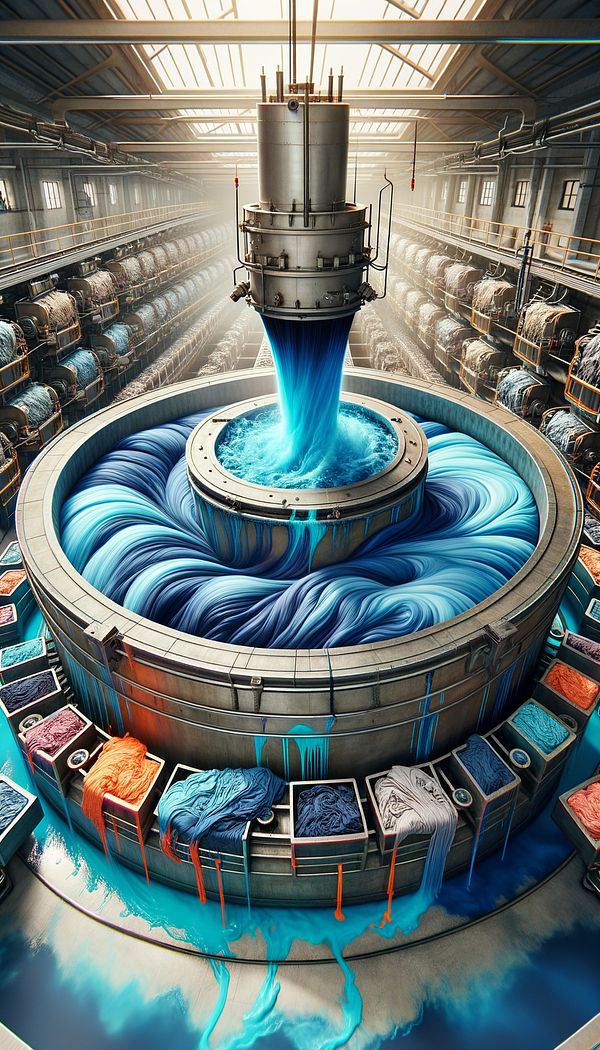What is Drum Dyeing?
Drum dyeing is a leather coloring process where hides are tumbled in a rotating drum with dye solutions.
Description
Drum dyeing is an efficient and common method used in the coloring of leather to achieve a uniform shade throughout the material. During this process, leather hides are placed in a large, rotating drum and are tumbled together with dye solutions. This method allows the dye to penetrate deeply into the leather, ensuring that the color is consistent not only on the surface but also through the thickness of the hide.
The main benefit of drum dyeing over other dyeing methods is its ability to produce a more natural-looking color with enhanced depth and richness. It also allows for a wider range of colors to be achieved, from subtle pastels to vibrant hues. Furthermore, because the dye penetrates the leather entirely, it tends to be more durable and less prone to fading or wear over time.
In addition to its usage in the interior design industry, drum dyeing is also prevalent in the fashion and automotive sectors for products such as furniture upholstery, handbags, shoes, and car seats. Its versatility and effectiveness have made it a preferred choice for manufacturers seeking high-quality, beautifully dyed leather goods.
Usage
In the realm of interior design, drum dyed leather can be used for a variety of applications including furniture upholstery, decorative panels, and even wall coverings. This method is particularly popular for pieces that require durable yet visually appealing leather, such as luxurious sofas, armchairs, and ottomans. Interior designers often choose drum dyed leather for its rich, even color and the high degree of customization it offers in terms of hues and finishes.
FAQs
-
Is drum dyeing only used for leather?
Primarily, drum dyeing is used for coloring leather, but the basic principle can be applied to other materials that can absorb dyes through a similar tumbling process.
-
What makes drum dyeing different from surface dyeing?
The key difference is that drum dyeing colors the leather all the way through, while surface dyeing only affects the top layer of the material, making drum dyed leather more durable and resistant to scratches or wear.
-
How does drum dyeing affect the texture of leather?
Drum dyeing generally preserves the natural texture of the leather since the dye penetrates the material deeply without affecting its surface. This results in a more authentic and high-quality finish.
-
Can any leather be drum dyed?
Most types of leather can be drum dyed, but the process is especially suitable for high-quality hides that can absorb and hold the dye well.
-
Is drum dyeing an eco-friendly process?
While drum dyeing can be more resource-intensive than other methods, advancements in dye and process technologies have led to more eco-friendly practices within the industry.
Practical Application
When selecting leather for interior design projects, consider the aesthetic and durability benefits of drum dyed leather. It can enhance the elegance and luxurious feel of furniture and interiors, but be sure to inquire about the eco-friendliness of the dyeing process used by your supplier to make more sustainable choices.
-
Furniture Types599 articles
-
Fabrication & Craftsmanship133 articles
-
Decorating Principles & Elements330 articles
-
Materials & Textiles360 articles
-
Textiles & Upholstery252 articles
-
BowbackA design feature in chairs where the back consists of a curved piece of wood.
-
Bandy LegBandy Leg refers to a curvature present in furniture legs.
-
Spool BeadA decorative small wooden molding featuring a series of round beads.
-
American FrontierAmerican Frontier refers to a style of interior design inspired by the American West.
-
FeltFelt is a non-woven fabric made from compressed and matted fibers.
